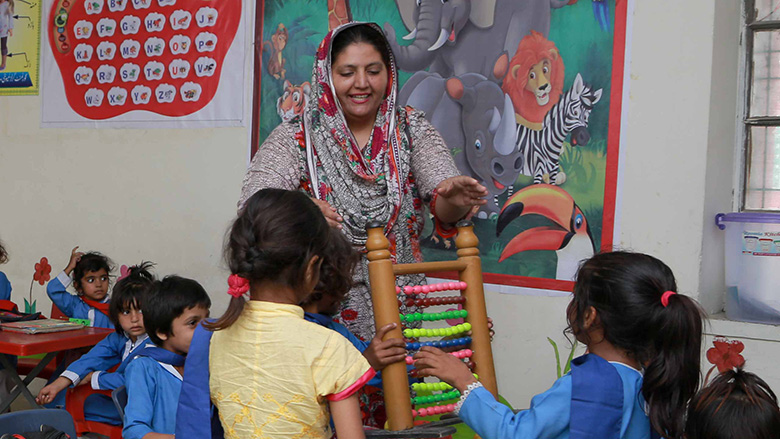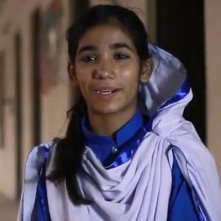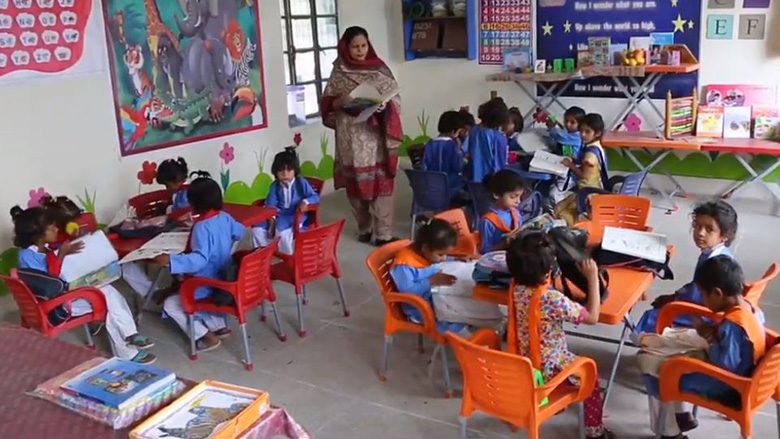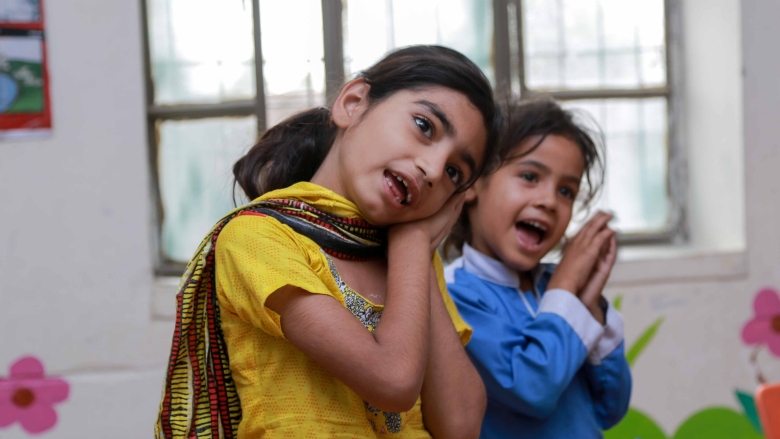The training program exercises rigorous measures to ensure both the teachers and students will reap the benefits.
Attendance is mandatory and trainee teachers who do not attend regularly lose the opportunity for permanent employment with the government.
Primary school teachers learn the national Early Childhood Education (ECE) curriculum whereas secondary school teachers are trained in Mathematics, English, Urdu and Sciences, according to their specialties.
“Our classes are very interesting; the teachers are very nice and involve us in discussions. They build an interest in us to learn more. English is my favorite subject!” says 14-year-old Adan Farwa, Grade 7.
CPD is an ongoing process with in-service training held periodically at all district QAED offices. “We’ve moved away from old-fashioned lecture-based, passive learning, to active learning,” says Sundas Naseer, a Math, Biology and Chemistry teacher for Grade 9 & 10. Ms. Naseer is an MPhil in Zoology and was inducted with a 4-week teacher training program in 2013.
“For the Biology induction training, we spent a week learning educational techniques, one week on Biology itself, and another on English Learning Skills and computers.” She finds her personal and professional development improved greatly, particularly as she was a recruit with no previous teaching experience.
“I use a lot of interactive methods to teach my students. If I’m teaching the respiratory system, for example, I will use myself or the students as dummies pointing out the ribs and so on for a more engaging learning experience.”
“The government used to hire unqualified teachers that were barely intermediate passed.
They used archaic methods of teaching, like rote method learning,” says Raheela Arif, who has been the Head Mistress at GGHS for the past 9 years and in the public-school system for the past 26 years. “The teachers these days have higher qualifications and use better, more modern teaching methods. They use their own skills and what they’ve learned, which has shown better results in our students.”
The Third Punjab Education Sector Project for Pakistan aims to support the Punjab province to improve school participation, completion, and teaching-learning practices with a focus on low-performing districts.





